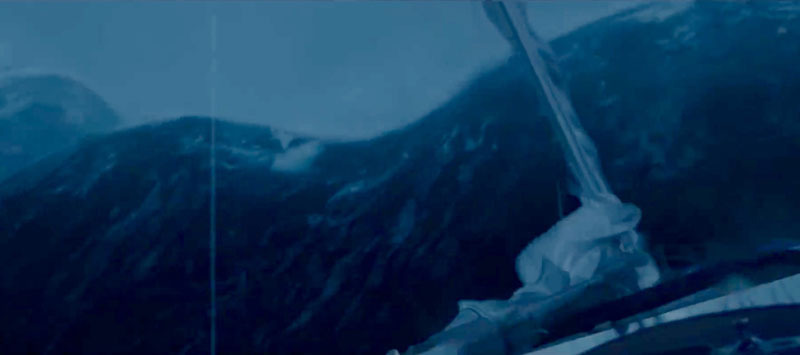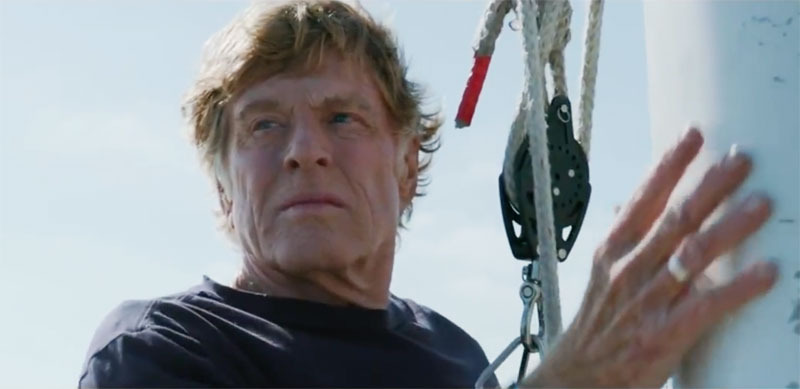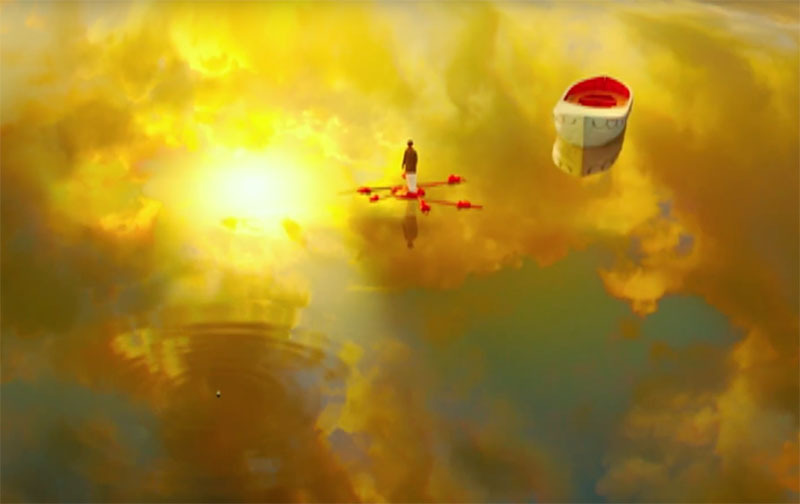
Latitude Movie Club: The Disaster Film
Latitude Nation — We were looking forward to reviewing a sailing movie in ‘real time’, but alas, Adrift came and went before we managed to get ourselves to the theater. (Did anyone out there happen to catch it? If so, we’d like to hear from you. And be sure to check out this review on SF Gate by Mick LaSalle).
Adrift is based in the true story of Tami Oldham Ashcraft, who was on a delivery from Tahiti to San Diego with her fiancé Richard Sharp in 1983 on the 44-ft sailboat Hazana when they were caught in Hurricane Raymond. As the storm swallowed them, Ashcraft was down below when Hazana was knocked down. "As she closed the door, she heard Sharp shout ‘oh my god!’ before the boat capsized. The force threw Ashcraft against the wall, knocking her unconscious," wrote www.allthatsinteresting.com. "When she awoke, the main cabin was filling with water, the masts were broken clean off, and the sails were dragging in the water, but the ship was miraculously still afloat." But Ashcraft’s fiancé was gone. She managed to jury rig a sail, and, using a sextant and watch — and surviving on canned food and peanut butter — navigated some 1,500 miles to Hawaii. Ashcraft survived 41 days at sea, and eventually wrote the bestselling book Red Sky in Mourning: A True Story of Love, Loss, and Survival at Sea.

To be honest, we have a hard time getting excited about seeing another disaster/survival at sea movie. It makes sense that Hollywood would latch onto this kind of story — triumph over adversity is the movie industry’s bread and butter. But as sailors, we find this trope tired and played-out. An extreme and anomalous part of the sailing life is over-represented, and of course, over-dramatized and often full of glaring inaccuracies that make sailors scream at the screen. (In his critique of Adrift, Mick LaSalle said, "A good rule of thumb about lost-at-sea movies: The good ones make you worry about the people and wonder if they’ll ever get off that boat. With the bad ones, you also worry — about whether you’ll ever get off that boat.")
This sentiment was exemplified for us in the 2013 film All Is Lost, which was actually well received by Hollywood critics (www.rogerebert.com gave it four out of four stars, Rotten Tomatoes ranks it at 94%; Robert Redford was also nominated for a Golden Globe for best actor). But any time we mention the movie to sailors, we overwhelmingly see eyes roll and hands thrown in the air in disbelief. "Why didn’t he turn his pumps on immediately once he hit the container?" asked one Latitude editor. "Oh, so he just built one layer of fiberglass and that was it," said another accomplished sailor.

To be fair, All Is Lost started with promise. It showed a singlehanded sailor going through the motions of his seamanship to adapt to catastrophe (no matter how much we disagreed with his choices). The film was something of a breakthrough for the artistic choices by writer/director J.C. Chandor; there’s nearly no dialogue, and no narrative looking at Redford’s life — we the audience are simply dropped onto a boat at sea with her skipper the moment disaster strikes. "One of All Is Lost’s greatest creative judgments is its lack of a backstory. There are no scenes here of contrasting moments of peace on land where Our Man was the lord of all he surveyed," wrote critic Ali Arikan.
But the film descends into disaster-movie hyperbole. Redford manages to recover from his collision with a shipping container, but then runs into a terrible storm and loses his boat anyway. The film almost feels like ‘torture porn’, where the object is to savage the protagonist, just to see if they can survive while we watch from the comfort of our homes.
If we’re talking disaster/survival at sea, then one of our favorite movies is Life of Pi, which is in no way a sailing movie, but was a wonderful book made into a beautiful movie by director Ang Lee. It is one of the most step-by-step looks at being alone on the ocean, rationing provisions, keeping the mind occupied . . . and, oh yeah, training and caring for a tiger.

The list of disaster-at-sea movies is too long to mention here. In many cases, these films cannot be considered sailing movies (we’re talking to you Titanic and the Perfect Storm). And in some instances — such as White Squall — the disaster is not the central theme of the movie, and it’s refreshing to see the characters living their lives outside the context of tragedy, however fleeting it may be.
We’d like to know: What’s your favorite disaster-at-sea film?
